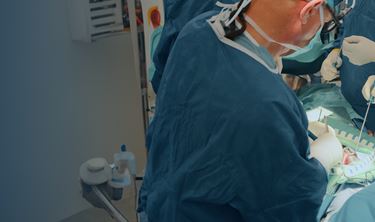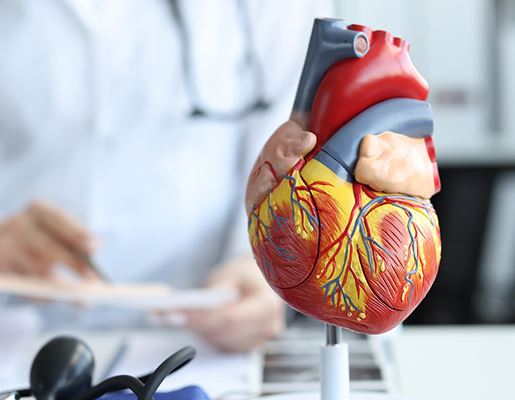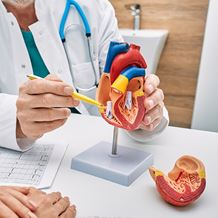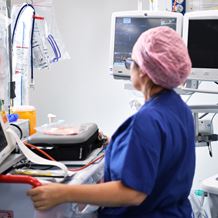What is heart valve surgery?
Heart valve surgery is a type of medical procedure to replace or repair one of your four heart valves. The valves are responsible for keeping the blood flowing in a one-way direction through the heart. If one or more of the heart valves is damaged or diseased and doesn’t function the way it is designed to, it may need to be repaired or replaced using heart valve surgery. There are a number of ways to perform heart valve surgery depending on the location of the affected valve, and the specific type of problem. It can be either be performed as open-heart surgery, or as a minimally invasive procedure. Your doctor will talk to you about the best approach for your condition.
What does it do?
Heart valves control the way that blood flows through your heart. In a healthy heart, they operate just like gate doors that open and close. If the valves become narrowed (stenosis) or stop closing properly (regurgitation), blood can be prevented from flowing freely, or it can flow it the wrong direction. This puts additional pressure on the heart, and in severe cases may lead to heart failure. Heart valve surgery restores proper function to the faulty heart valve.
How does it work?
Heart valve surgery works by repairing or replacing any damaged heart valve that is no longer working efficiently. Heart valve repair surgery may be performed using a variety of techniques such as trimming away excess tissue, using special rings to narrow an enlarged artery or using artificial cords to strengthen the valve. Heart valve replacement surgery is performed when the faulty heart valve is considered beyond repair. It is either replaced with a mechanical valve made from metal or carbon, or a biological valve made from cow or pig tissue. Heart valve surgery is an effective procedure to restore the heart valve function and slow the onset of heart valve disease.
Why is it performed?
Heart valve surgery is required when the heart valves no longer function efficiently. Some people are born with the condition, and in other cases it has developed over time as a result of disease or infection. Heart valve surgery helps reduce the symptoms that accompany the condition and prevent the disease worsening. Symptoms typically include:
- Dizziness
- Chest pain
- Breathlessness
- Palpitations
- Swelling of feet, ankles or tummy
- Rapid weight gain
Procedure
Heart valve surgery is generally performed as open-heart surgery, although in some cases the surgery may be performed using minimally invasive and keyhole surgery techniques. The procedure will vary by patient and will depend on the severity of the condition and the location of the affected valve.
- The procedure is carried out using a general anaesthetic
- Patients are connected to a lung-bypass machine while the surgery is performed
- A small incision is made in the chest, the location will depend upon the affected valve
- For replacement, the new valve is sewn into a rim of tissue retained from the old valve and then attached in place
- For repair, the exact procedure will vary by the extent of the condition
- The wound is closed using wires and stitches
Recovery
After surgery, you will spend some time in hospital to recover. You will be given a personalised rehabilitation program that includes a physiotherapy routine, mobility advice and guidance on what to look out for. Your medical team will talk to you about how to manage your recovery at home and may recommend that you attend a cardiac rehabilitation program. Find out more about heart valve surgery recovery.
What's next?
If you have been experiencing heart-related symptoms, book an appointment with our cardiac services specialist today.
Our specialists in Cardiac Services
View all specialists






